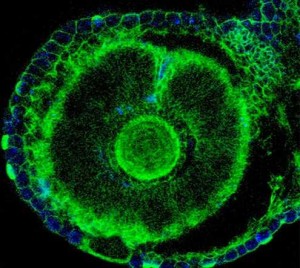Researchers at the Hebrew University of Jerusalem successfully converted skin cells into placenta-generating cells using the reprogramming method. The intent is to help women who have recurrent miscarriage and placental dysfunction diseases give birth to healthy babies, although researchers said more work will need to be done before that is possible.
The placenta is the least understood human organ, but arguably one of the most important ones. It influences not only the health of a woman and her fetus during pregnancy, but also her lifelong health. Recurrent miscarriage and other placental insufficiency occur when the placenta does not develop properly, or is damaged. Placental dysfunction diseases are associated with low birth weight, premature birth and birth defects. One such disease is fetal growth restriction (FGR, also termed intrauterine growth restriction [IUGR]), that tends to display mild mental retardation and in severe cases causes fetal death. They also carry increased risk of complications for the mother. To date, tools to model or treat these diseases are limited because all attempts to isolate propagate the human placenta precursor cells in the dish have failed.
In an attempt to generate full-function placenta-generating cells, Dr. Buganim and colleagues screened for genes that support the development of the placenta in the mouse model. They identified three genes (Gata3, Eomes and Tfap2c) that when introduced into skin cells, they could initiate a cell fate program that completely converted the skin cells into stable and fully functional placenta-generating cells. These skin-derived TSCs look like native TSCs, and function and contribute to developing placenta. Now, the main focus of the Buganim lab is to apply their technology to generate fully functional human placenta-generating cells.
The success of this study will grant a real chance for women who suffer from recurrent miscarriage and placental dysfunction diseases to have healthy babies. It is important to note that these cells do not hold any risk since they integrate only into the placenta and not to the embryo itself.
For more information please visit: www.huji.ac.il

